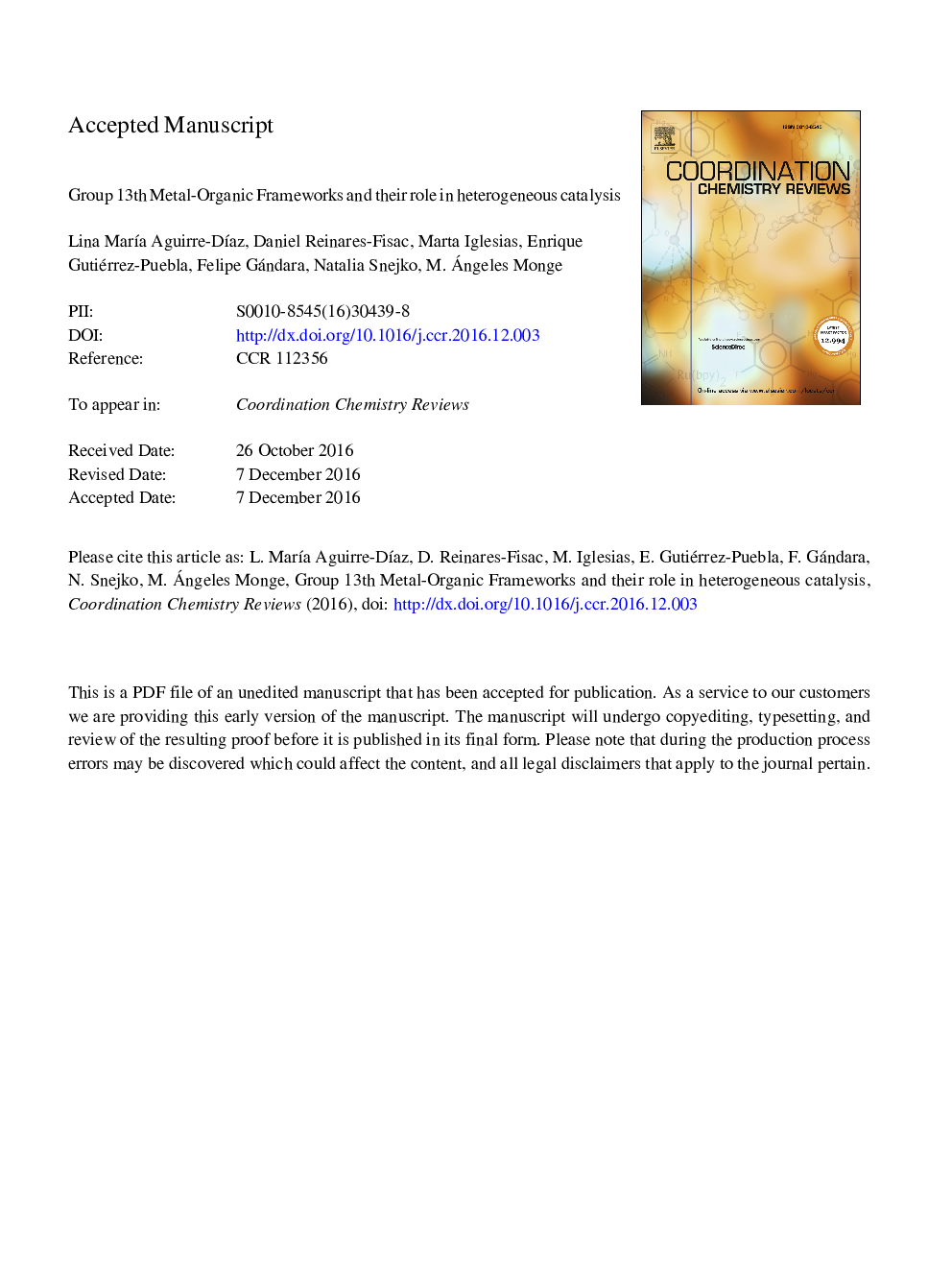| Article ID | Journal | Published Year | Pages | File Type |
|---|---|---|---|---|
| 5150776 | Coordination Chemistry Reviews | 2017 | 64 Pages |
Abstract
Through the pages of this review, we describe the most important MOFs so far built with the group 13th elements: indium, gallium and aluminum, with particular emphasis on indium-based materials. We also review the role of these materials as heterogeneous catalysts in several organic transformations. Thus, on one hand, we comment on the MOFs developed along the years with these three p-elements in order to appreciate the evolution of the control of the synthesis process that now allows developing green materials using environmentally friendly conditions. On the other hand, we review the different approaches of these MOFs as heterogeneous catalysts used both in standard well-known organic transformations and in multicomponent coupling reactions.
Keywords
DMFPiperaziniumH3BTB5-aminoisophthalic acid4,5-Imidazoledicarboxylic acid2,5-Thiophenedicarboxylic acid2,5-pyridinedicarboxylic acidTEBATetrapropylammoniumIMHDEFHINtPATMPH4tbaPyH2bpdc4,4′-biphenyldicarboxylic acid2,2′-bipyridine-5,5′-dicarboxylic acidHPPDMA4,4′-(Hexafluoroisopropylidene)bis(benzoic acid)HPBA1,10-Phenanthroline1,2-diaminocyclohexane1,2,4,5-Benzenetetracarboxylic acid1,3,5-Benzenetricarboxylic acid2,2′-Bipyridine2,5-Furandicarboxylic acid4,4′-Bipyridine4,4′-bipyDPEAluminium2,6-Naphthalenedicarboxylic acidOxalic acidHeHImidazolesIndiumTetraethylammoniumdimethylformamideDimethylaminediethylformamideIonic liquidHantzsch dihydropyridineTEAHeterogeneous catalysisGallium
Related Topics
Physical Sciences and Engineering
Chemistry
Inorganic Chemistry
Authors
Lina MarÃa Aguirre-DÃaz, Daniel Reinares-Fisac, Marta Iglesias, Enrique Gutiérrez-Puebla, Felipe Gándara, Natalia Snejko, M. Ángeles Monge,
